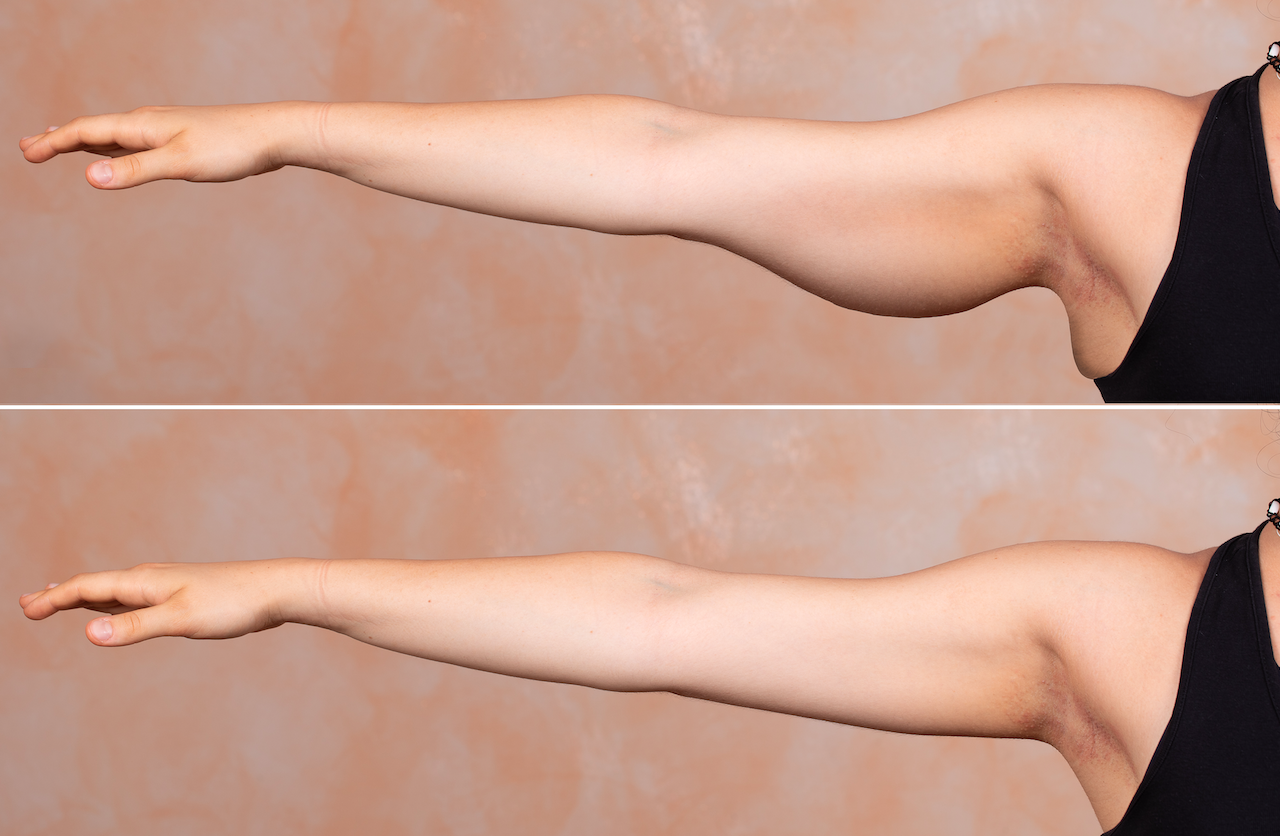What is an arm lift?
An arm lift, otherwise known as Brachioplasty, can remove the excess skin and fat deposits, leaving the upper arms with a more pleasing and youthful contour. An arm lift addresses the area between your armpit and elbow. After excess fat and skin are surgically removed, your skin is placed back over your newly repositioned arm contours to create a more aesthetic appearance. The incision extends from the elbow to the underarm and sometimes on to the side of the chest. In some instances, liposuction may be used alone or with an arm lift to remove excess fat in the upper arms.

Am I a good candidate for arm lift surgery?
Many patients seek an arm lift procedure to boost their body image and self-esteem. But arm lift surgery is not for everyone. As a person ages, upper arm skin can become loose and flabby. Smokers are not preferred candidates, nor are people with some chronic medical conditions, including bleeding disorders. If you are significantly overweight or have significant and frequent fluctuations in your weight, arm lift surgery may not produce your desired results.
Preparing for your arm lift
Before scheduling your procedure, your doctor will carefully review your medical history, including all previous surgeries and any chronic conditions you may have. Dr. Wilson will meticulously examine your arms to determine your treatment options.
You will likely be directed to suspend the use of any supplements or drugs that may elevate bleeding, such as aspirin. If you smoke, you’ll be required to stop for a specified period before and after your procedure. In some cases, your smoking may disqualify you. Make sure you have arranged for someone to drive you home after your arm lift and try to get some help around the house for a few days as you recover for optimal healing.
Arm Lift Procedure
An arm lift can be done in a hospital or an outpatient surgical facility, General anesthesia is preferred. Your surgeon will make incisions on the undersides of your arms. The length of the incisions is determined by how much skin needs to be removed. The doctor will then “lift” and tighten your underlying tissues to give your arms a more contoured look. A suctioning technique known as liposuction may also be used to remove fat. At the end of the procedure, your incisions will be closed and secured with either absorbable sutures or stitches that will be removed in one to two weeks following your arm lift.
Arm Lift Recovery
Your incisions will be covered with bandages, and your arms will be loosely wrapped in elastic sleeves or “ace” wraps to reduce post-surgical swelling. Drains a typically not needed but your doctor may also choose to insert them to drain excess blood and fluid. These tubes are typically removed in a couple of days following your surgery.
You’ll need to avoid lifting your arms above your shoulders for up to four weeks. Stay away from working out and other strenuous physical activity for at least a month as directed by your doctor. Any needed pain medication will be prescribed as appropriate. You may also be given a round of antibiotics to reduce the possibility of infection. Contact your doctor immediately if you experience shortness of breath, chest pains, an irregular heartbeat, or a fever.
Arm Lift Results
The smoother and tighter contours of your arms will be almost immediately apparent once your swelling and bruising subside. Results are typically long-lasting, but you can optimize the benefits of arm lift surgery by maintaining a healthy and stable weight.

Dr. Wilson invites you to schedule a consultation to determine if arm lift surgery can address your goals. Our office serves the great Knoxville area. Contact us today!

